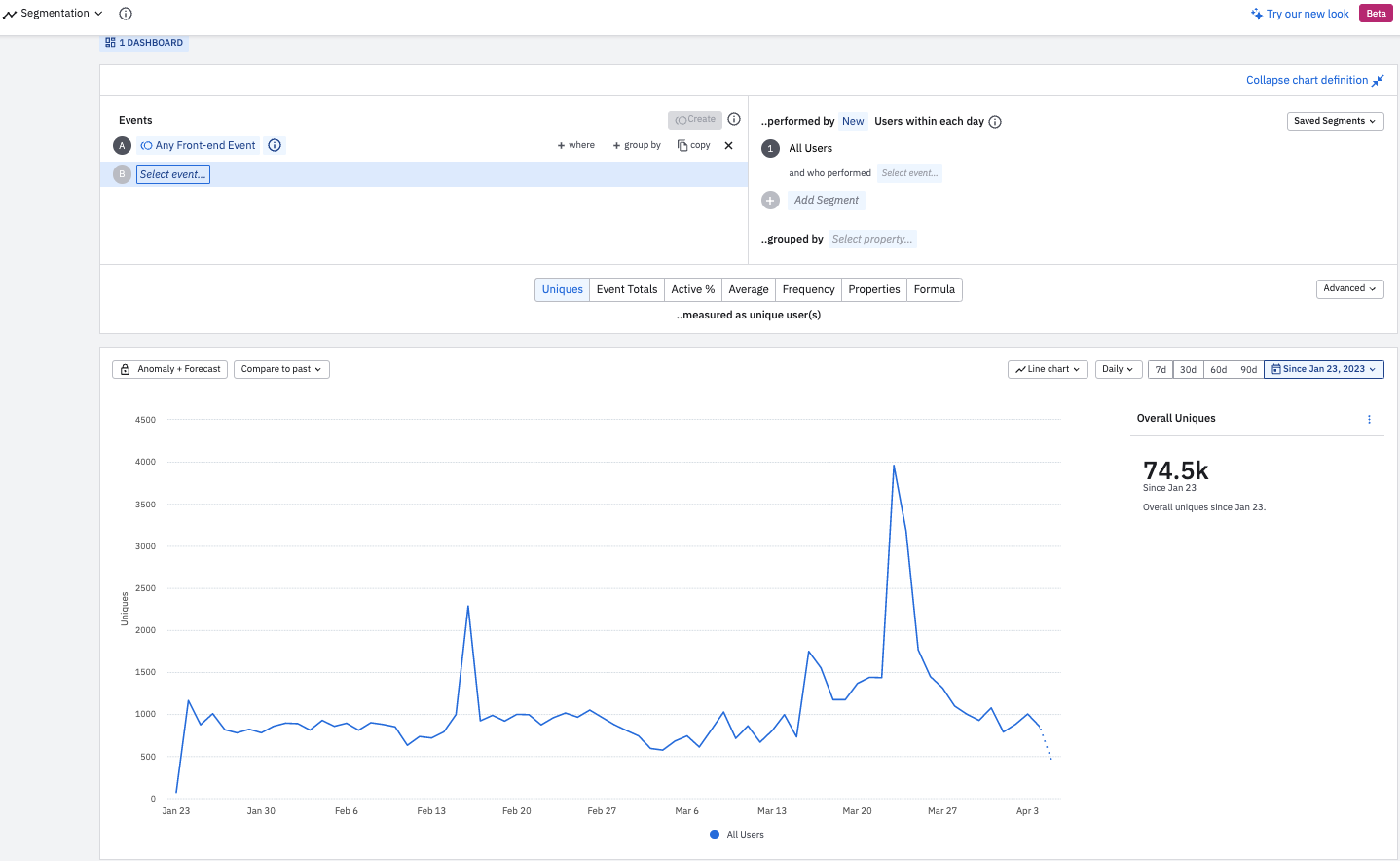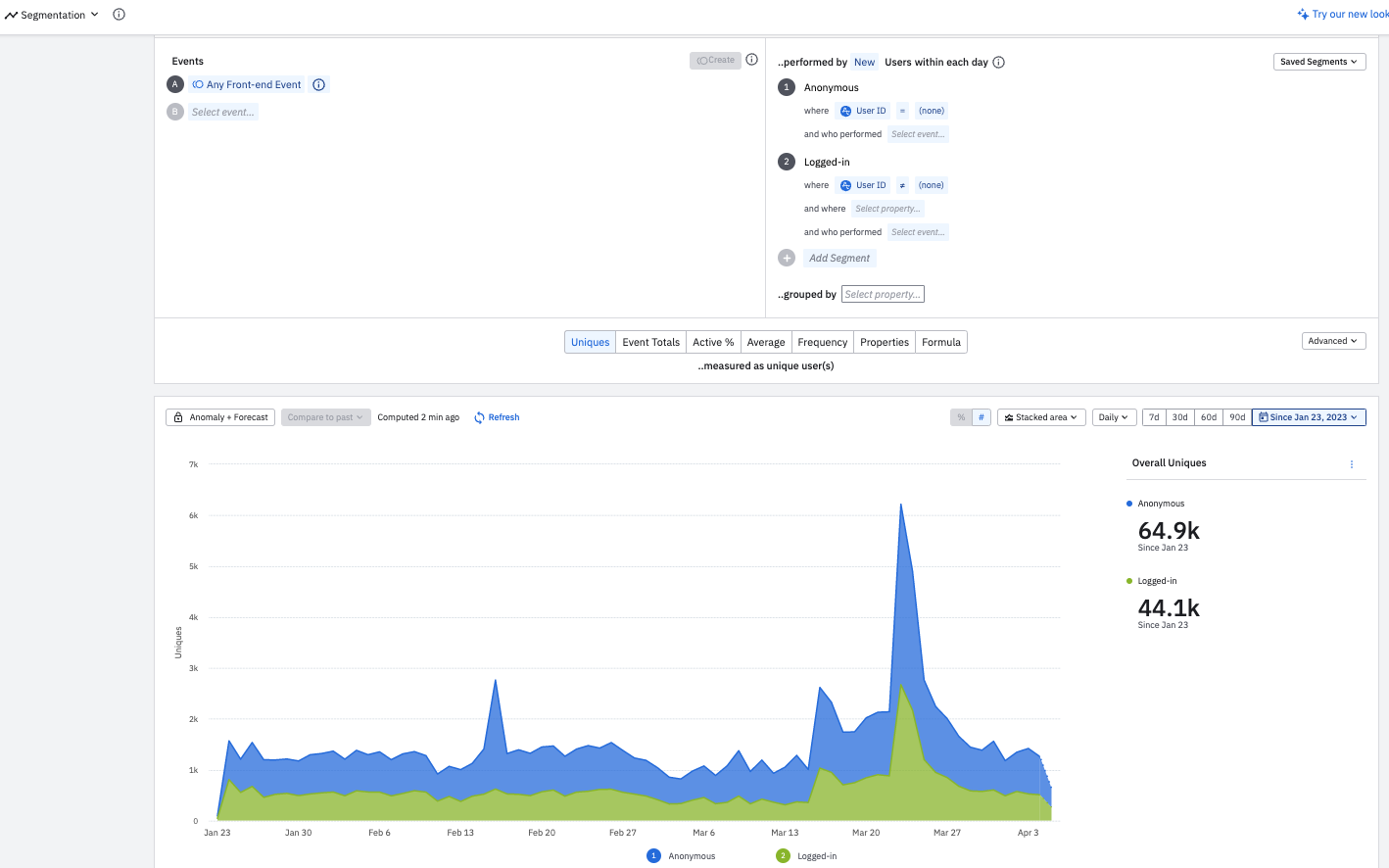From the docs and crawling this forum, I understand that the user merging process is retroactive, so if after an anonymous user logs in, and are identified with a user_id, the user_id of the anonymous events will be retroactively set.
But I’m having trouble confirming this in practice. If I do the below sequence:
- New session from incognito window
- Fire an event (page view) as an anonymous user
- Log-in (with a user that has had previous activity and is not new)
- I’ve confirmed this does indeed merge the existing user to the anonymous user via User Lookup page.
And then I do the following segmentation on Amplitude ID and “_new”, Amplitude New User Event (for context the Jan 23rd date is when we implemented amplitude).

Which shows this user as a “New” user, but they should not be new after the merging process, since the merged User ID was not “new”.
How is this possible? If I extend the above analysis not just for a single Amplitude ID, but for the entire user base, are anonymous users getting counted as New when they shouldn’t be and throwing off my entire “new” vs. “existing” analysis?
Separately, but related, if I look at all “New” users and then segment by: 1) User ID = “none” and 2) User ID != “none”, the total count of the segments is larger than if the only segment was all users. How is this possible? Doesn’t this prove that some double counting exists?
Below is total new users

And then here is total new users segmented by “Anonymous” (User Id = “none”) and Logged-in.
